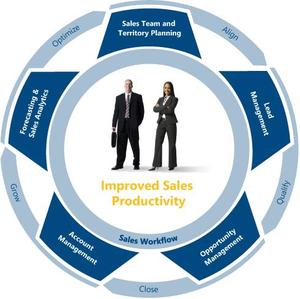Customer Relationship Management: What, Why, How
Megan Walsh, 09 September 2010
In this, my final blog post for Magnetism, I would like to reflect on some key principles of Customer Relationship Management that I have learnt during my time in this role. Whether you are a CRM developer or sales person, an avid CRM user or a CRM newbie I think sometimes its good (and necessary) to return to the age old question “What is CRM and why do we do it?”

My favourite definition of CRM comes from boostmyproduct.com’s Terms Glossary in which Customer Relationship Management is defined as “a business strategy designed to reduce costs and increase profitability by strengthening customer loyalty.” This definition also answers the question of why organisations all over the world are adopting CRM strategies and software – to reduce costs and increase profitability. Sounds great doesn’t it? I don’t know many organisations that have time and money to spare. If you are one of the majority that don’t have superfluous financial and time resources then the more pertinent question is not what or why, but how.
The business axiom ‘you can only manage what you can measure’ is the part of the answer. CRM software allows you to measure and report on your business KPIs, thereby allowing you to manage your staff and resources to ensure your targets are consistently met. Once you have set up your CRM software to allow you to record the information relevant to your business’ health you are able to create dashboards and reports that will provide you with the real time information you need to develop forecasts and strategies for your organisation. By making informed decisions you are able to manage your resources to generate the maximum return.
The visibility into your business that CRM software provides also allows you to recognise and utilise Pareto’s 80/20 principle to your advantage. Pareto’s principle states that for many events roughly 80% of the effects come from 20% of the cause (http://en.wikipedia.org/wiki/Pareto_principle). In business this may translate to mean that 80% of your revenue comes from 20% of your customers, or products. Once you know which 20% provides the most value to your organisation you are able to focus your efforts on that area.

Image from http://www.strategex.com/profit_enhancement/pareto.php
One of the most effective ways CRM software reduces costs and increases productivity is by allowing you to implement repeatable processes in your organisation through workflow and automation. Repeatable processes that deliver repeatable outcomes is an equation for success in any industry. When employees know exactly what they need to do to meet their targets they feel empowered and become more productive, meaning greater profitability for their organisation as a whole.
I have seen Microsoft Dynamics CRM reduce costs and increase productivity for multiple companies during my time at Magnetism, with one of the most significant success stories being the New Zealand Red Cross’ return on investment figure of more than $600,000 in the 8 months following go live. If you are a CRM newbie reading this post and want to know more about how your organisation can see results like that contact us to find out more.

